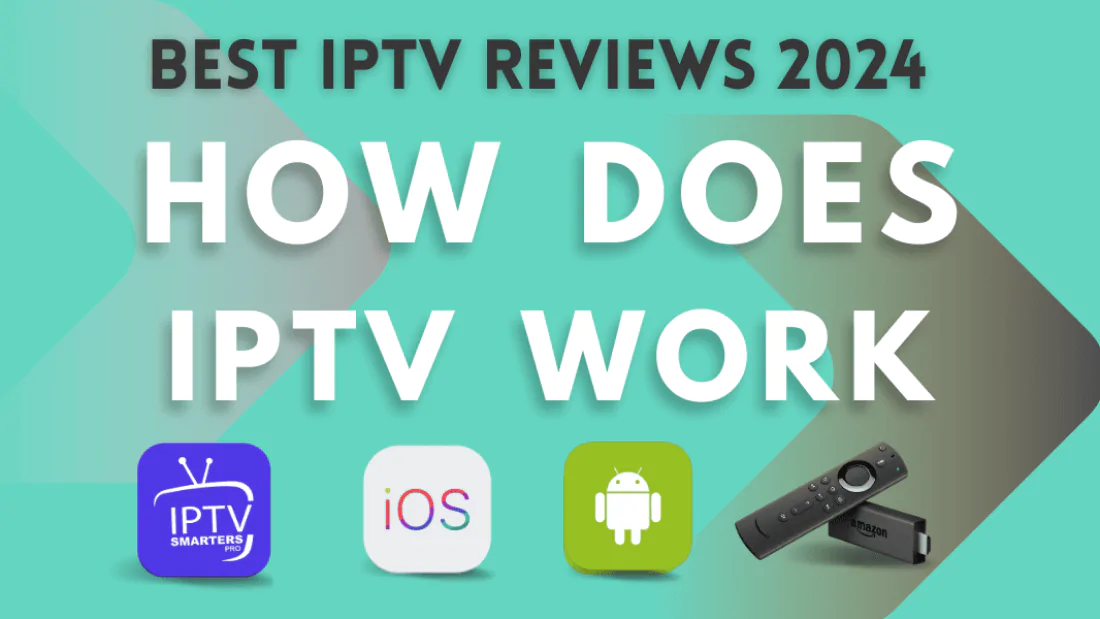In the realm of modern entertainment, IPTV has emerged as a revolutionary technology, transforming the way we consume television content. But what exactly is IPTV, and how does it work? In this comprehensive guide, we’ll delve into the inner workings of IPTV, exploring its technology, functionality, and benefits.

Understanding IPTV
How Does IPTV Work, IPTV or Internet Protocol Television, is a method of delivering television content over the internet rather than through traditional cable or satellite means. Unlike traditional broadcasting methods, which transmit content through satellite signals or cable connections, IPTV utilizes the internet protocol suite to deliver media content to viewers.
The Technology Behind IPTV
At its core, IPTV operates by encoding television signals into IP packets and transmitting them over a network. These IP packets are then decoded by a set-top box or IPTV-compatible device, allowing users to access and view the content on their television screens.
How Does IPTV Work:
Components of IPTV
1. Content Delivery Network (CDN)
A crucial component of IPTV is the Content Delivery Network, which ensures efficient and reliable delivery of media content to viewers. The CDN consists of servers strategically located across various geographical regions, optimizing content delivery by reducing latency and buffering.
2. Middleware
Middleware serves as the bridge between the IPTV service provider and the end-users. It manages user authentication, content delivery, and interactive features such as video-on-demand and electronic program guides.
3. Set-Top Box (STB) or IPTV-Compatible Device
Users access IPTV services through a set-top box or an IPTV-compatible device connected to their television. These devices decode the IP packets and display the content on the screen, providing a seamless viewing experience.

How Does IPTV Work
1. Content Acquisition
The IPTV service provider acquires television content from various sources, including broadcasters, content creators, and production studios. This content is then encoded into digital format for delivery over the internet.
2. Content Encoding and Packaging
Before transmission, the television content is encoded into IP packets and packaged using standard protocols such as MPEG-TS (MPEG Transport Stream) or HLS (HTTP Live Streaming). This process ensures compatibility with a wide range of devices and networks.
3. Content Delivery
Once encoded and packaged, the IP packets are delivered to the end-users through the Content Delivery Network. The CDN optimizes delivery by selecting the most efficient route and minimizing network congestion, ensuring high-quality streaming without interruptions.
4. User Interaction
Through middleware, users can interact with the IPTV service, accessing features such as channel selection, video-on-demand, and interactive applications. Middleware also enables personalized recommendations based on user preferences and viewing history.
Benefits of IPTV
1. Versatility and Flexibility
IPTV offers unparalleled versatility and flexibility, allowing users to access television content anytime, anywhere, on any device with an internet connection. Whether at home or on the go, viewers can enjoy their favorite shows and movies without limitations.
2. Enhanced Viewing Experience
With features such as video-on-demand, time-shifted viewing, and interactive applications, IPTV provides an enhanced viewing experience tailored to the preferences of individual users. Additionally, high-definition and 4K streaming capabilities ensure stunning visual quality.
3. Cost-Efficiency
By eliminating the need for costly infrastructure such as satellite dishes and cable connections, IPTV offers a cost-effective alternative to traditional television services. Users can subscribe to IPTV plans at competitive rates, enjoying a wide range of channels and content options.

Conclusion
In conclusion, IPTV represents a groundbreaking shift in the way we consume television content, leveraging internet technology to deliver an immersive and personalized viewing experience. By understanding the technology and functionality behind IPTV, users can make informed decisions about their entertainment choices, embracing the future of television in the digital age.


